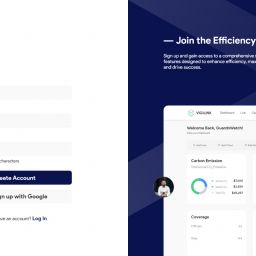How to Build an Effective Employee Recognition Program
Employee recognition is a powerful tool that can boost morale, enhance employee engagement, and contribute to a positive work culture. An effective employee recognition program acknowledges and appreciates employees’ contributions, leading to increased motivation, productivity, and retention. In this article, we will explore the key steps to building an effective employee recognition program that fosters a culture of appreciation and drives organizational success.
1. Define Your Objectives:
Before designing an employee recognition program, clearly define your objectives. Determine what you want to achieve through recognition, such as improving employee morale, reinforcing desired behaviors, or enhancing teamwork. Align these objectives with your organization’s values and strategic goals to ensure the recognition program supports the overall mission.
2. Involve Employees:
Involve employees in the process of developing the recognition program. Seek their input and feedback through surveys, focus groups, or suggestion boxes. Understand what types of recognition are most meaningful to them and what behaviors or achievements they consider worthy of acknowledgment. This involvement ensures that the program resonates with employees and aligns with their preferences.
3. Establish Clear Criteria and Guidelines:
Establish clear criteria and guidelines for recognition. Determine the behaviors, achievements, or milestones that warrant acknowledgment. These can include outstanding performance, innovation, collaboration, customer satisfaction, or going above and beyond expectations. Clearly communicate the criteria to employees, so they have a clear understanding of what is recognized and rewarded.
4. Offer a Variety of Recognition Methods:
Provide a variety of recognition methods to cater to different preferences and circumstances. Consider a mix of formal and informal recognition approaches. Formal recognition may include awards, certificates, or public announcements, while informal recognition can involve simple gestures like verbal praise, thank-you notes, or peer-to-peer recognition. Providing diverse recognition options ensures inclusivity and allows for personalized acknowledgment.
5. Make it Timely and Consistent:
Recognition should be timely and consistent to have the desired impact. Acknowledge and appreciate employees as soon as possible after the achievement or behavior deserving recognition occurs. Prompt recognition reinforces the positive impact and increases the employee’s motivation and engagement. Consistency is crucial to maintain fairness and prevent bias, ensuring that all deserving employees receive appropriate recognition.
6. Encourage Peer-to-Peer Recognition:
Encourage peer-to-peer recognition as an integral part of the program. Peer recognition builds a culture of appreciation and empowers employees to recognize each other’s efforts. Implement mechanisms, such as a recognition platform or regular team meetings, to facilitate peer-to-peer acknowledgment. This creates a supportive and collaborative work environment where employees feel valued by their peers.
7. Tie Recognition to Rewards and Incentives:
Consider incorporating rewards and incentives into your recognition program. While recognition itself holds intrinsic value, providing tangible rewards or incentives further reinforces the significance of the acknowledgment. Rewards can range from gift cards and bonus payments to additional time off or professional development opportunities. Align rewards with employees’ preferences and ensure they are meaningful and aligned with your organization’s budget.
8. Communicate and Promote the Program:
Effectively communicate and promote the employee recognition program to ensure its success. Create awareness among employees about the program, its objectives, and how to participate. Use multiple communication channels, such as emails, posters, intranet, or team meetings, to consistently highlight the program and share success stories of recognized employees. Encourage managers to actively promote and champion the program to drive participation and engagement.
9. Evaluate and Refine:
Regularly evaluate the effectiveness of your employee recognition program. Collect feedback from employees through surveys or focus groups to gauge their satisfaction and perception of the program. Monitor key metrics, such as employee engagement levels, retention rates, or productivity, to assess the program’s impact on organizational outcomes. Use the feedback and data to refine and improve the program over time.
Conclusion:
Building an effective employee recognition program requires careful planning, employee involvement, and a commitment to fostering a culture of appreciation. By clearly defining objectives, establishing criteria, offering a variety of recognition methods, and promoting peer-to-peer recognition, organizations can create a program that boosts morale, enhances engagement, and drives overall success. Regular evaluation and refinement ensure that the program remains relevant and impactful. Remember, a well-designed recognition program not only rewards employees for their efforts but also reinforces desired behaviors and cultivates a positive work environment where employees feel valued and motivated to excel.
















